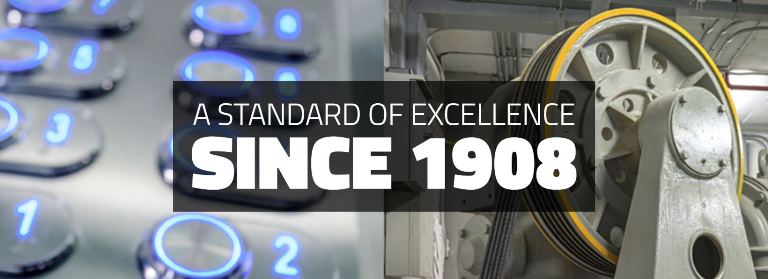Last
week we had the opportunity to look at a group of buildings that had an
interest in seeing what else is out there.
The buildings had kept the multinational company who had installed the
elevators 15 years ago. A new property
manager was hired about a year ago and suggested that the
buildings should look at alternatives, if nothing more, to know what they are getting
compared to what is out there.
The
building had no idea when the elevator mechanic shows up, if they show up or
what they do. This is a common response
because typically we have keys to the building and typically no one else enters the machine room.
The
walk through was fairly typical with exception of a few items
1. Potential leaky
packings
2. Elevator pit hasn’t
been cleaned since construction
3. Water in the elevator
pit
Leaky
packing?
Is this a leaky packing or has someone not cleaned out the oil pan for 5
years? Hard to say when you do not even
know when the last time someone was at the building. I often give the analogy of the HVAC person
who comes to your home twice a year and most of the time you have no idea what
they do. If you opened up your furnace
and saw something like this, would you think they are doing their job? Or would you feel taken advantage of?
Construction
dust -
This elevator pit doesn’t appear to have been cleaned from construction. A clean elevator pit will not make your
elevator run better. A clean elevator
pit is something we should be doing because it is part of our job as
housekeeping. A clean pit is also an
indication of you have someone who takes pride in their job and most likely is
looking at the more technical items as well.
If in the last 15 years an elevator company has been cashing your
checks but never took the time to clean the pit, I would ask some questions.


Water
in the elevator pit
- The water in an elevator pit with piping corrosion is concerning because you
could have a hydraulic issue and a pipe can blow out or when a hole is
developed in the pipe from rust, someone could trip and fall out of the
elevator. We recently inherited an
elevator pit that had been wet on and off over the last 10 years. Their
piping developed a hole and sprayed oil everywhere in the hoistway, which
triggered a service call. Once reviewed,
the breach required the car to be shut off.
When we replaced the compromised piping, which was the initial cause, and
went to replace the Victaulics on other parts of the piping we discovered
that the entire line needed to be changed due to corrosion. It took more time and more money. If we are
going to a building on a regular basis we should be looking at this and letting
the building know they need their sump fixed.
Elevator pit sumps fail on a regular basis, this is part of our job to
look at during our maintenance visit. While
our visits cost you money, they can save you money when we find items like a
broken sump pump in the elevator pit.
*The building also has a responsibility to act when they are told they
have items to complete.
Maintenance
records
- The elevator code requires maintenance records be kept in the elevator
machine room. Larger multinational firms
have digital records accessible to building owners/property management which typically never make it into the machine room.
The elevator code indicates maintenance records are to be accessible to
elevator personnel, inspectors, sales people, etc at all times. Colley Elevator
is a proponent of having maintenance records in the elevator room to follow the
elevator code. Having maintenance
records in the elevator machine room is a best practice and will also keep your
elevator company honest.
Take away – The elevator
industry, as a whole, is coming to buildings less and less. This is a trend which overloads elevator route mechanics. Your maintenance agreement most
likely says maintenance “as needed” or “systematic”. If your only interaction
with the elevator company is getting a bill and writing a check, find out what they are doing and when they
are doing it. I would recommend to insist
that the contract indicate in writing how often someone is coming. If you have
maintenance records in the elevator room, it is as simple as a building
owner/manager going to the room and looking. The reason I like records in the machine room
is because a person can complete their electronic form from their car without
even going into the building. If you have written records in the machine room,
we have to actually go into the building. There are a lot of good companies out there
that will supply you with transparency, written records and are accountable. If you do not have one, find one, they are out
there.
Maintenance
intervals/quarterly vs monthly – Something that should be brought up here is
that if a building is paying for quarterly visits on a hydraulic elevator you
most likely will get about 4 hours of maintenance a year. Historically the elevator industry was going
to hydraulic elevators each month and about 12 hours a year. When there is less time given/paid for
maintenance, there is less time for a technician do his/her job correctly. Not to mention that we should be checking Fireman's Emergency Operation (FEO) once a month per code.
Hey! Sign up for our mailing list! Each month you will get
some great info on Colley! It is short
and quick to run through, you’ll like it!
If
you have any questions or would like additional information feel free to
contact me at CraigZ@colleyelevator.com or 630-766-7230 ext.
107 or on our web page at www.colleyelevator.com
Also
check us out on Instagram @Colleyelevator see what we have been up to.

























